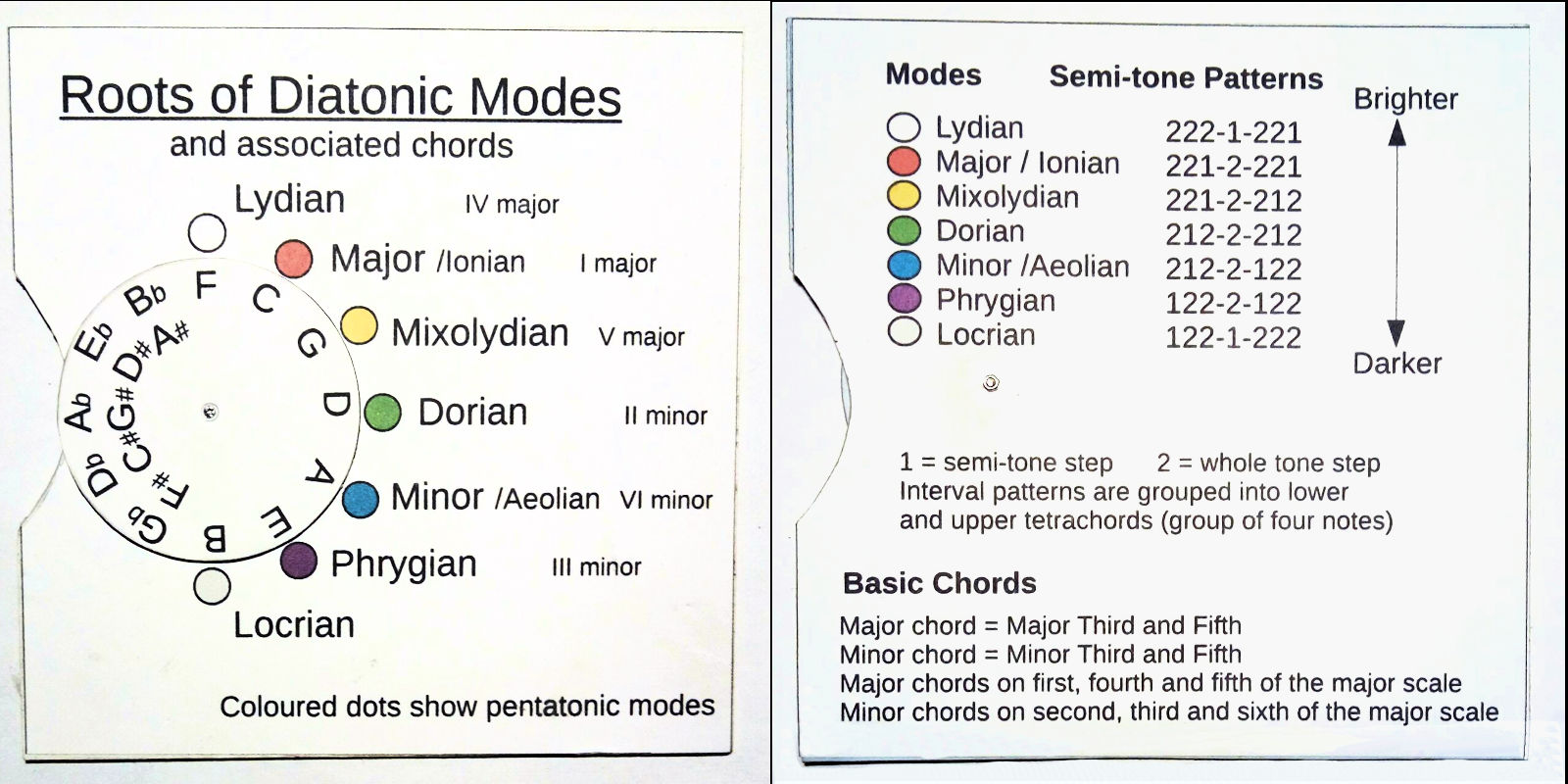The Circle Of Fifth And The Diatonic Modes

The photo shows front and back side of a little tool I made. It has an inner wheel depicting the notes of the circle of fifth, and an outer ring depicting all seven modes of the diatonic scale in descending order from a brighter to a darker characteristic, with five of them (marked by coloured circles) depicting the roots and notes of the pentatonic modes.
One can dial a particular note to a root of a mode, and read all the other notes, and see their harmonic associations. Modes are seen in an order from Lydian to Locrian, from the brightest mode (Lydian) to the darkest mode (Locrian), with Dorian in the middle in a kind of balance. The more notes appear from the root of a mode to the left (anti-clockwise), the darker the character of the mode is, the more notes appear to the right (clockwise) , the brighter the character of the mode is. This 'darker' and 'brighter' has nothing to do with a note being higher or lower up a scale, nor with the key signature having more sharp or more flat signs, but with the structure of the intervals of the mode, which determines a "feel" of the mode.
All five of the pentatonic notes form harmonious sounding intervals, but the notes at the top and bottom (Lydian and Locrian mode roots) introduce some rather disharmonious intervals, namely two intervals a semitone apart, and one six semitones apart. In the pic it is F-E, C-B, and F-B.
My sincere thanks to Anton Schwartz to explain the concept of brighter and darker modes, and how to use the Circle of Fifth to help analyse and make visible the harmonic character of modes and scales. Please see this webpage by Anton Schwartz about brighter and darker modes:
https://antonjazz.com/2012/11/brightness-darkness/
Another way to help understand the progression of the diatonic modes from brighter to darker is to consider where the semi-tone intervals fall in the modal pattern. If we start with the darkest mode, Locrian, the semi-tone intervals are furthest to the left, and progressing to the next brighter mode, the semi-tone interval shifts one step to the right (up on the scale), first in the higher tetrachord, followed by a shift in the lower tetrachord. This progression goes right to the brightest of the modes, Lydian, from where a further shift could be considered to go back to the Locrian mode, but now this mode is a semi tone up from where we started.
Written as a circle of all seven diatonic modes;
1 = a semi-tone step; 2 = a whole tone step:
Dorian
(212)2(212)
|
Mixolydian | Aeolian / (natural) Minor
(221)2(212) <--+--> (212)2(122)
|
Ionian / Major | Phrygian
(221)2(221) <----+----> (122)2(122)
|
Lydian | Locrian
(222)1(221) <+> (122)1(222)
|
Brighter modes are to the left, darker modes to the right, Dorian a kind of neutral middle. The horizontal lines indicate the mirroring of a pattern between a brighter and a darker mode, the pattern for Dorian is self-mirrored.